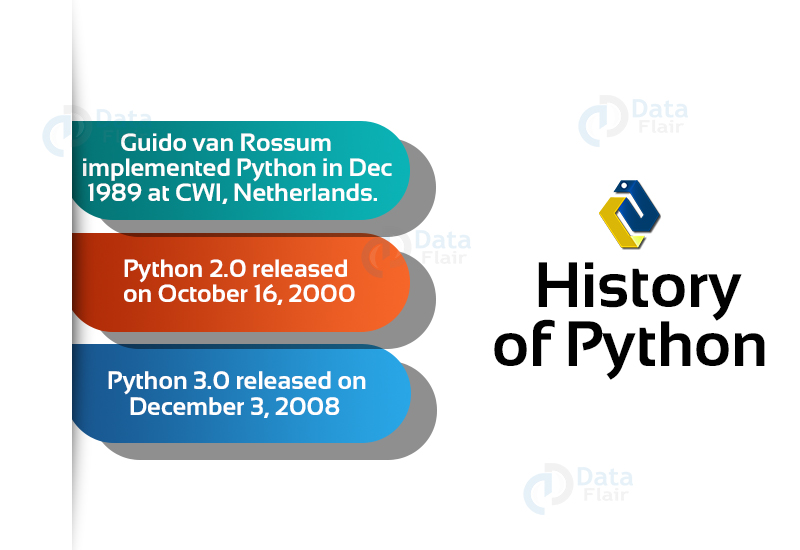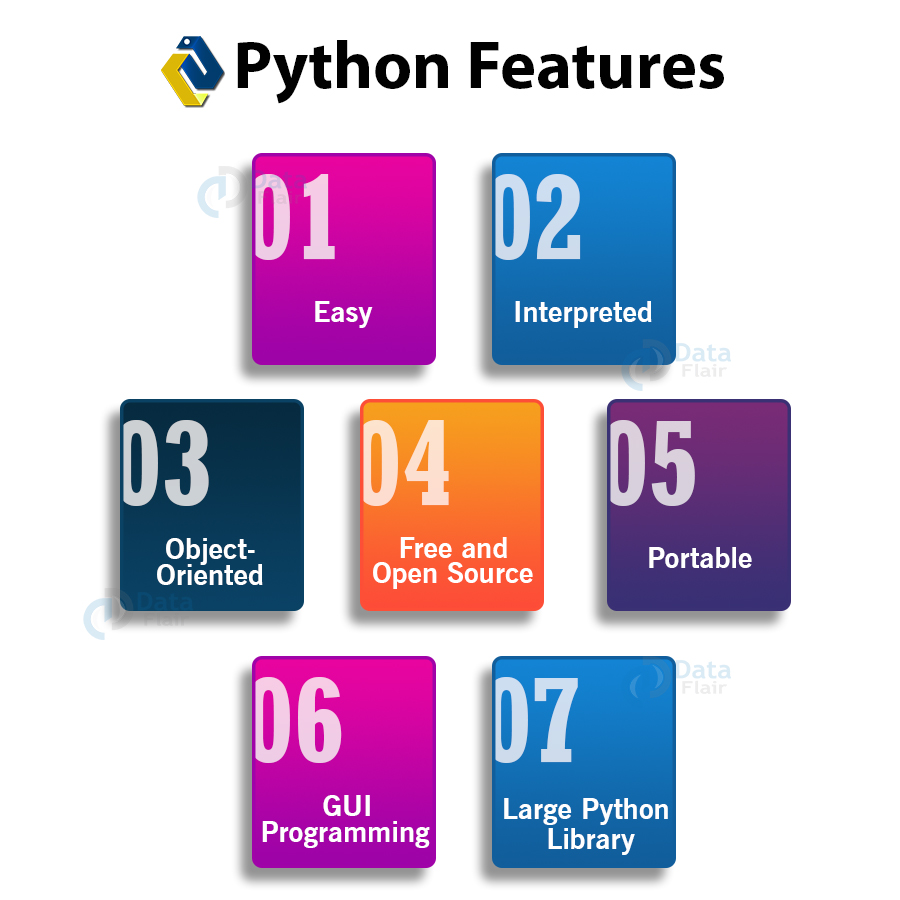Introduction to Python – Learn Python Programming
Python course with 57 real-time projects - Learn Python
Welcome to the World of Python – The Most Powerful and Popular Programming Langauge
Are you ready to be a Python Pro – Learn the Essentials of the Python Programming Language. Our Python introduction guide is your secret weapon to success. Not only will you learn the basics of Python syntax, but you’ll also gain a deep understanding of the language and be able to easily create your own programs.
Here is a quick overview of what you are going to learn today in this Python Introduction-
- What is Python
- Python History
- Features of Python
- Applications of Python
- Architecture and Working of Python
- Python Constructs
What is Python?
Python is a General Purpose object-oriented programming language, which means that it can model real-world entities. It is also dynamically-typed because it carries out type-checking at runtime.
It does so to make sure that the type of construct matches what we expect it to be.
The distinctive feature of Python is that it is an interpreted language.
The Python IDLE (Integrated Development Environment) executes instructions one line at a time. This also lets us use it as a calculator.
Why is it called Python?
Guido van Rossum named it after the comedy group Monty Python. That is why the metasyntactic variables (those we will often use to explain code syntax) used here are ‘spam’ and ‘eggs’ instead of ‘foo’ and ‘bar’.
History of Python
Technology is evolving rapidly!
Stay updated with DataFlair on WhatsApp!!
- Python was conceived in the late 1980s and was named after the BBC TV show Monty Python’s Flying Circus.
- Guido van Rossum started implementing Python at CWI in the Netherlands in December of 1989.
- This was a successor to the ABC programming language which was capable of exception handling and interfacing with the Amoeba operating system.
- On October 16 of 2000, Python 2.0 released with many new features.
- Then Python 3.0 was released on December 3, 2008.
Why Learn Python?
Python is the “most powerful language you can still read”, Says Paul Dubois
Python is one of the richest Programming languages.
Going by the TIOBE Index, Python is the Most Popular Programming Language in the world.
This makes a career in Python a great choice.
Python Features
Let us now see various features of Python that make it so powerful and popular:
a. Easy
Python is very easy to learn and understand; any beginner can learn Python easily. When writing code in Python, you need fewer lines of code compared to languages like Java.
b. Interpreted
It is interpreted(executed) line by line. This makes it easy to test and debug.
c. Object-Oriented
The Python programming language supports classes and objects and hence it is object-oriented.
d. Free and Open Source
The language and its source code are available to the public for free; there is no need to buy a costly license.
e. Portable
Since Python is open-source, you can run it on Windows, Mac, Linux or any other platform. Your programs will work without any need to change it for every machine.
f. GUI Programming
You can use it to develop a GUI (Graphical User Interface). One way to do this is through Tkinter.
g. Large Python Library
Python provides you with a large standard library.
You can use it to implement a variety of functions without the need to reinvent the wheel every time. Just pick the code you need and continue.
In this Python introduction, we have provided a short description. You must read them in detail at Python Programming Features
Applications of Python
Python is easy to pick-up even if you come from a non-programming background. You can look at the code and tell what’s going on.
Talking of Python applications, some of the cool things that you can do are –
- Build a website using Python
- Develop a game in Python
- Perform Computer Vision (Facilities like face-detection and color-detection)
- Implement Machine Learning (Give a computer the ability to learn)
- Enable Robotics with Python
- Perform Web Scraping (Harvest data from websites)
- Perform Data Analysis using Python
- Automate a web browser
- Perform Scripting in Python
- Perform Scientific Computing using Python
- Build Artificial Intelligence
Python isn’t limited to these applications. If you’ve ever used services from brands like YouTube, Dropbox, and Netflix, then you’ve been a consumer of Python.
The search-engine Google also made great use of this language in its initial stages.
Python Architecture and Working
Let’s now talk about Python architecture and its usual flow –
a. Parser
It uses the source code to generate an abstract syntax tree.
b. Compiler
It turns the abstract syntax tree into Python bytecode.
c. Interpreter
It executes the code line by line in a REPL (Read-Evaluate-Print-Loop) fashion.
Python Constructs
a. Functions in Python
A function in Python is a collection of statements grouped under a name. You can use it whenever you want to execute all those statements at a time.
You can call it wherever you want and as many times as you want in a program. A function may return a value.
b. Classes in Python
As we discussed earlier, Python is an object-oriented language. It supports classes and objects.
A class is an abstract data type. In other words, it is a blueprint for an object of a certain kind. It holds no values.
An object is a real-world entity and an instance of a class.
c. Modules in Python
Python module is a collection of related classes and functions.
We have modules for mathematical calculations, string manipulations, web programming, and many more.
d. Packages in Python
Python package is a collection of related modules. You can either import a package or create your own.
Python has a lot of other constructs. These include control structures, functions, exceptions, etc.
Interested in learning python in detail? Just follow the sidebar and learn Python completely.
Python Interview Questions for Beginners
Below are some of the frequently asked Python Interview questions:
- How does Python get its name?
- What are the Features of Python that make it so popular?
- Define Modules in Python?
- What is the difference between List and Tuple in Python?
- Compare Python with Java
Summary
This was all about Python introduction where you learnt what is python, why python is so powerful, what are the applications of Python and basic architecture and constructs of python.
Did you know we work 24x7 to provide you best tutorials
Please encourage us - write a review on Google




what a wonderful way of explanation.really great informative content.If anyone is interested in reading blogs like me or for any type of technical trainings
Lol, imagine having answered all the logic and theoretical questions correctly and then someone asks why is it called python and you don’t know and they like: we’ll call you 😂
Wow! Python is fascinating! I feel very motivated to learn.
Waouh !! Python is realy Amazing. I trust that I may be exceptionnal thanks to Python.
Python is nice to when you are reading but making it absorb isn’t funny
Great introduction part and very helpful.
So wonderful introduction.